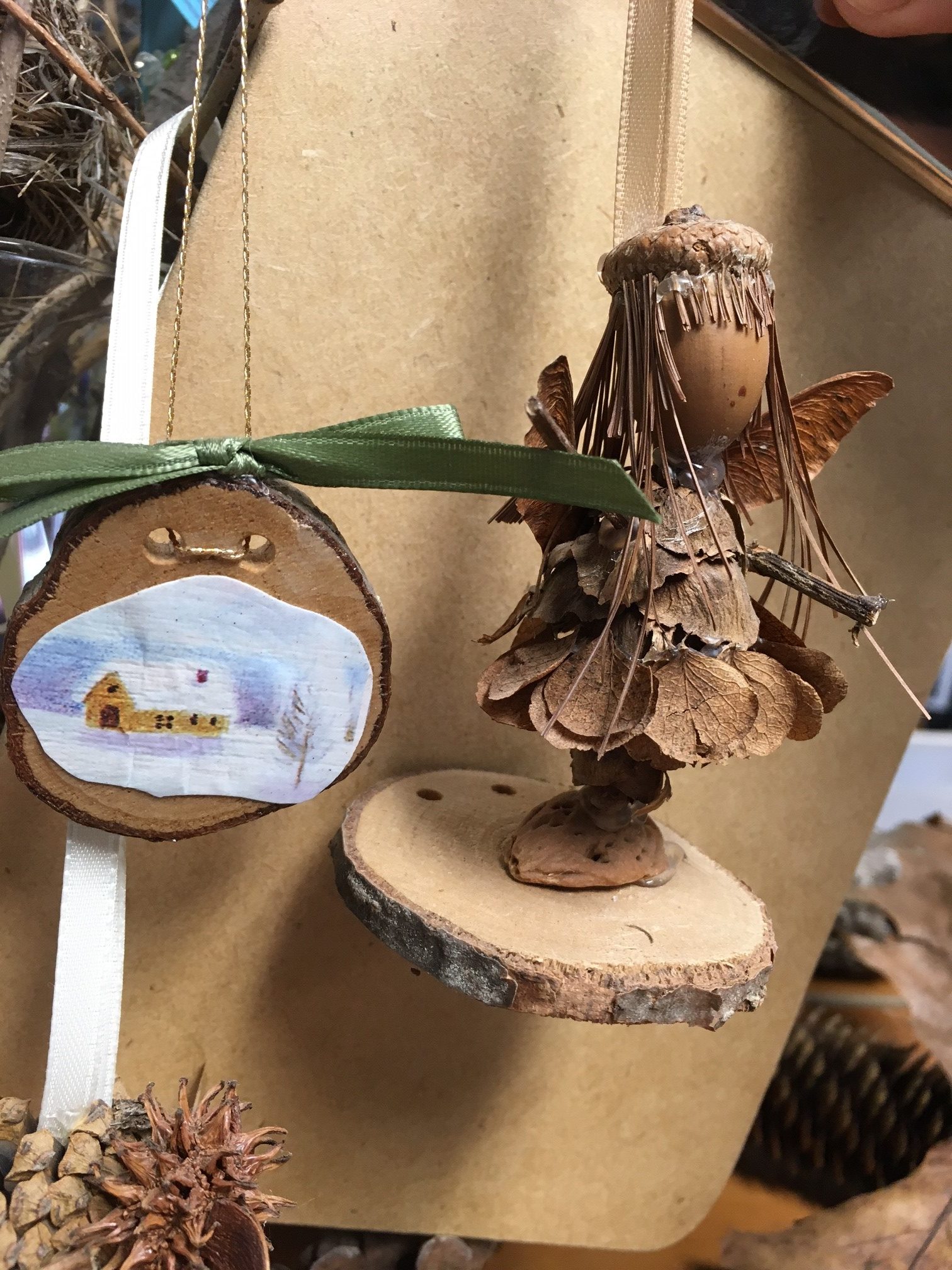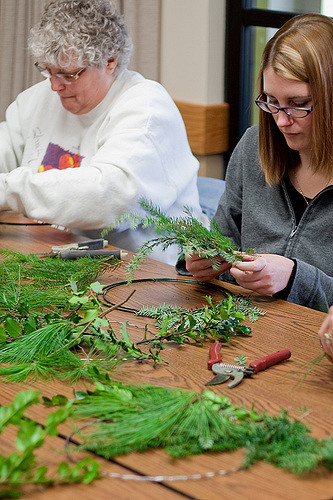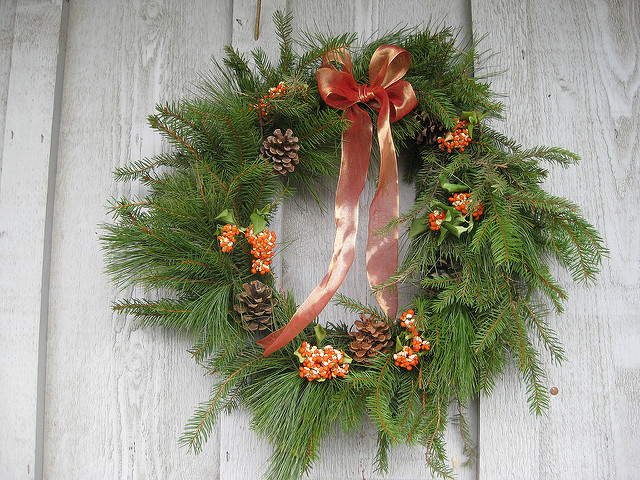Think about life the way it once was… living in a cave, a mud shelter, a leather enclosure. You would depend on nature for everything – your water, food, shelter, tools, and supplies. I imagine that it would be only natural to take items from nature and give them meaning, turn them into symbols, representations of ideas, thoughts, and sentiments.
I also imagine that decorations began that way. Someone found a pretty pebble, it reminded her of someone she loved, she brought it back to the cave and put it on a ledge. Or someone went on a hunting expedition that didn’t end well, some of the hunters died, and a bone from the animal they sought became a talisman of luck that was hung front and center in the wigwam every time a hunting expedition left. Suddenly the symbol for the tribe is a femur and an arrow and no one really remembers why.
 Of course, I’m making all this up. I have no idea why people started decorating. And especially around the holidays, be it Halloween, Hanukkah, or Mardi Gras, people seem to love to decorate. There are historical reasons for the types of decorations, as well as religious and social. No matter the reason, however, most people decorate with something.
Of course, I’m making all this up. I have no idea why people started decorating. And especially around the holidays, be it Halloween, Hanukkah, or Mardi Gras, people seem to love to decorate. There are historical reasons for the types of decorations, as well as religious and social. No matter the reason, however, most people decorate with something.
At home, my house is permanently decorated with rocks, shells, insect wings, and leaves. I have nature art on the walls, photos of favorite places, and art by and from my favorite people. I also have plants and antiques adorning the walls. Seasonally I add bundles of wheat, fresh flowers or bouquets of fall leaves. In the winter the decorating gets a little more elaborate, though.
With the onset of darkness and white and gray landscapes, green is always a color that gets pulled in for the winter holiday season. Traditionally this is true as well, for very similar reasons. Before the advent of electricity, reminders that growth and life will indeed return were important and necessary. Bringing greens in was a pleasant reminder that spring will come again.
On many of those greens were red berries. Opposites on the color wheel, they work well together and it certainly is a nice contrast. I remember as a child the dark green yew bushes with the red berries, the holly with red berries, and now I look out my office window at the swamp filled with brilliant red winterberry holly berries that seem radiant even on cloudy days. To me it is no wonder that red and green are traditional winter holiday colors.
I also decorate with blue in the winter. I can find it in the winter – in the shadow of a snow bank, in the layer of ice that has broken free in the creek, in the middle of the icicles that hang from banks and eaves. The blue works well with the sparkle of new fallen snow, and it seems peaceful. If winter is nothing else, it is peaceful.
In addition to greens and berries and colors, even many of the holiday symbols come from nature. Birds, fire, and flowers give rise to doves, candles, and poinsettias. Others include fish, olive branches, stars and leaves. More sophisticated and organized than a pebble on a rock ledge perhaps, but not particularly different.
 Join Audubon on December 10 from 1:00 -3:00 p.m. to make some holiday decorations with greens and other natural objects. You will learn the basic techniques for making an evergreen wreath and then you will use those skills to make a wreath, swag, or centerpiece. If you finish early there will be other nature-inspired decorations you can make from wall hangings to ornaments. Audubon provides all the materials, though you may want to bring your own gloves and clippers for the greens. The cost is $32 unless you’re a member or under 16, then it is $24. Please call to make your paid reservation.
Join Audubon on December 10 from 1:00 -3:00 p.m. to make some holiday decorations with greens and other natural objects. You will learn the basic techniques for making an evergreen wreath and then you will use those skills to make a wreath, swag, or centerpiece. If you finish early there will be other nature-inspired decorations you can make from wall hangings to ornaments. Audubon provides all the materials, though you may want to bring your own gloves and clippers for the greens. The cost is $32 unless you’re a member or under 16, then it is $24. Please call to make your paid reservation.
Regardless of the winter holiday you celebrate (there are about 26 of them between December 1 and January 8) come and make a decoration that means something to you. Bring friends and family and create something that may spark a tradition, capture a moment, or become a legacy. Have a good time using natural and sustainable materials to make your holiday a little greener.
Audubon Community Nature Center builds and nurtures the connections between people and nature. ACNC is located at 1600 Riverside Road, just east of Route 62 between Warren, Pennsylvania and Jamestown, New York. More information can be found and reservations can be made at auduboncnc.org or by calling (716) 569-2345.
Sarah Hatfield is a naturalist at Audubon Community Nature Center.


Recent Comments